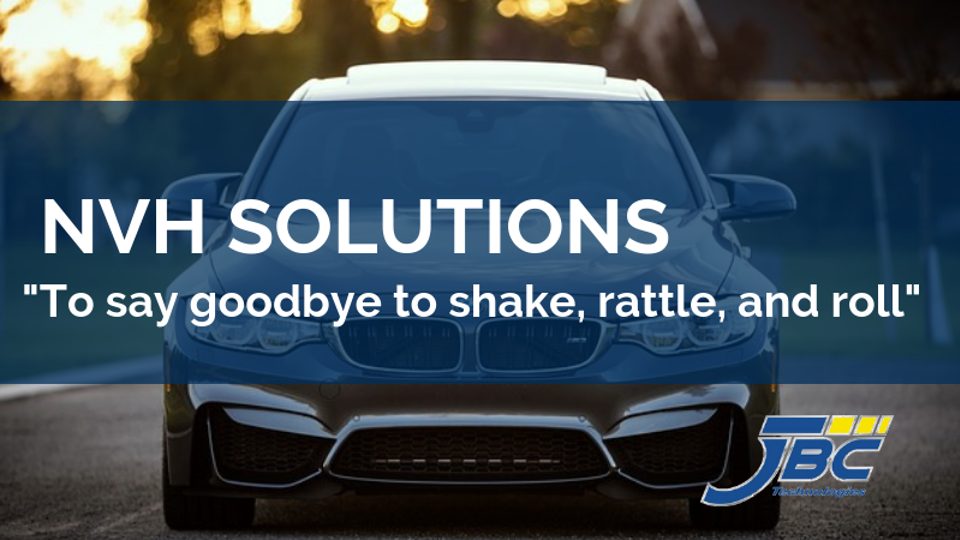Say Goodbye to Shake, Rattle & Roll: Solutions for Reducing NVH

“Shake, rattle, and roll” may be a good thing when dancing to the blues, but unwanted noise is rarely appreciated in the products we use and buy daily. Consumers want quieter cars, less intrusive home appliances, and more silent air conditioning systems. We want to run the dishwasher while watching TV in and drive whle listening to our Yacht Rock without noisy distractions.
It is not surprising then that industries such as aerospace, medical, HVAC, appliance, and automotive, have all made the reduction and elimination of noise, vibration and harshness (NVH) a key priority. To address unwanted noise, however, it's important that we first understand what sound is and how it's transmitted in and through different parts and products.
What is Sound, and How is it Related to NVH?
Sound can be either airborne or structural. Frequencies can be transferred through:
- physical contact with a product (vibrations), or
- through the air, as sound waves contact us (radiated sound).
Noise, vibration, and harshness (NVH) is either unwanted sound (Noise) or oscillations that are felt rather than heard (Vibration), and the severity and discomfort associated with those unwanted sounds or vibrations (Harshness).
Today, noise, vibration, and harshness can affect the quality, longevity, and safety of individual parts and complete products across all sorts of industries. Car engines and parts must withstand mechanical shocks with minor wear and tear. Dishwashers and refrigerators should run quietly enough to watch television in the next room. Safety equipment, like airbags, must respond to the vibrations that signal danger and trigger action without going off unnecessarily.
Die-Cut Solutions for Reducing NVH
A wide array of gaskets, seals, foams, surface protectants, tapes, and other die-cut parts and materials can help to dampen and eliminate sound and vibration in a variety of applications and environments. Selecting the right materials to address NVH is vital to meeting customer demand and preserving an organization’s competitive edge.
Here's a helpful table that recommends a few examples of specialty materials that work great for reducing and eliminating unwanted noise and vibration.
| If you are trying to solve for.. | Consider… |
|---|---|
|
Vibration in heavy objects where weight isn’t an issue |
Closed cell, dense material (e.g., high-density microcellular foams) blocks both vibrational and radiated sound. Examples include Rogers Poron® and many K Flex® materials. |
|
Radiating sound in applications requiring light materials |
Open cell, light, loose fill material (e.g., fiberglass or cotton insulation) to absorb or dissipate sound without weighing a product down. Examples include AIM Autozorb™ and 3M Thinsulate™. |
|
Vibrational sound issues in lightweight objects |
Low density, closed cell materials (e.g., PVC or neoprene) to allow for seals around irregular surfaces or compressibility. Examples include Gaska Tape PVC®, and Volara PE® foams. |
JBC Technologies - Precision Die-Cutting & Custom Converting to Solve Your NVH Problems
The experts at JBC Technologies bring decades of expertise in flexible materials converting and precision die cutting to help manufacturers mitigate a variety of noise control challenges. From material selection to designing, production, testing, and more, we are here to help ensure you select the right materials and products for your application.
Contact us today to learn more about the products and services we offer to help overcome challenges related to NVH and BSR.